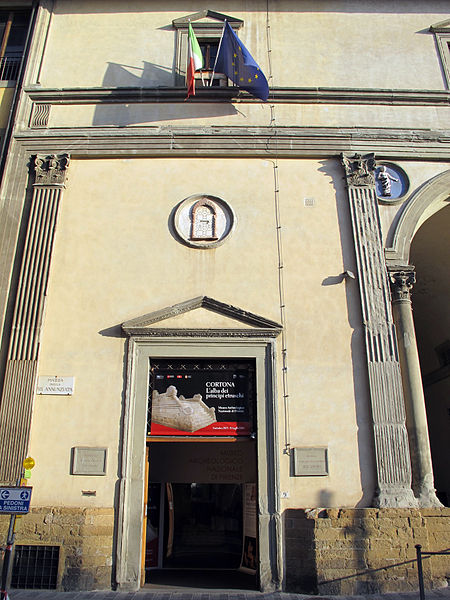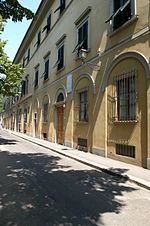National Archaeological Museum, Florence
1870 establishments in ItalyArchaeological museums in ItalyEtruscans museums in ItalyMuseums established in 1870Museums in Florence ... and 4 more
Museums of ancient Greece in ItalyMuseums of ancient Rome in ItalyNational Archaeological Museum, FlorenceNational museums of Italy

The National Archaeological Museum of Florence (Italian – Museo archeologico nazionale di Firenze) is an archaeological museum in Florence, Italy. It is located at 1 piazza Santissima Annunziata, in the Palazzo della Crocetta (a palace built in 1620 for princess Maria Maddalena de' Medici, daughter of Ferdinand I de Medici, by Giulio Parigi).
Excerpt from the Wikipedia article National Archaeological Museum, Florence (License: CC BY-SA 3.0, Authors, Images).National Archaeological Museum, Florence
Via della Colonna, Florence Quartiere 1
Geographical coordinates (GPS) Address Nearby Places Show on map
Geographical coordinates (GPS)
| Latitude | Longitude |
|---|---|
| N 43.776238888889 ° | E 11.262266666667 ° |
Address
Palazzo della Crocetta
Via della Colonna 38
50112 Florence, Quartiere 1
Tuscany, Italy
Open on Google Maps










